Gestures of the Generative Painter
Simulated brushstrokes have long appeared in digital art. But generative art's expressivity is less about imitating painterly gestures than devising a system to produce them.
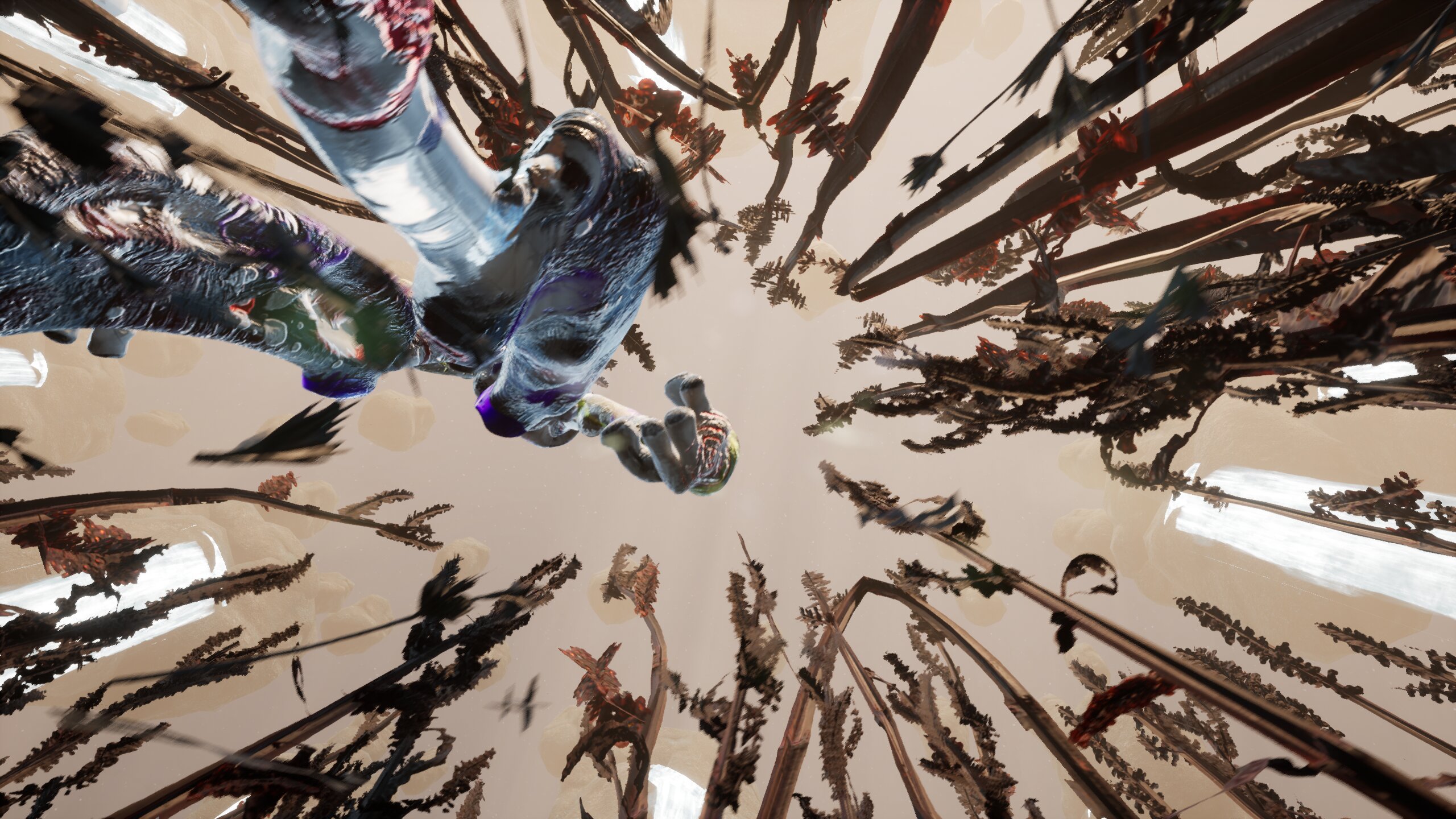
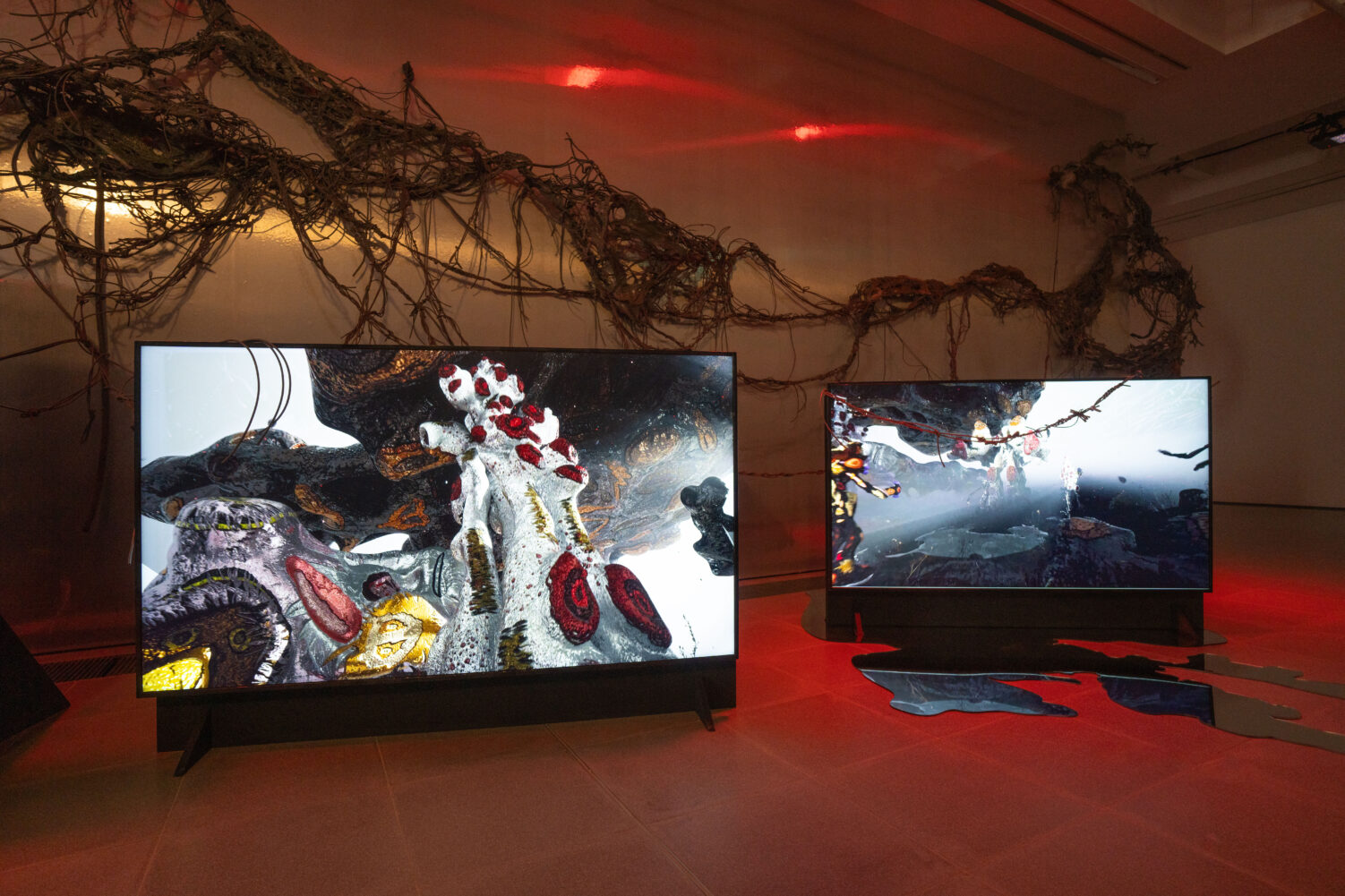
What role will NFTs and the blockchain find within the established art world? Gabriel Massan’s Third World: The Bottom Dimension (2022) offers some possible answers. Third World is a video game available for free download on Steam and the subject of an exhibition at the Serpentine Galleries in London, on view through October 2023. Created by Massan and collaborators with support from the Serpentine’s Arts Technologies program, Third World once again demonstrates that the Serpentine is more willing than most institutions to support art that experiments with new tools, including NFTs. But it’s the integration of NFTs into Third World that feels like the most underdeveloped and underwhelming aspect of the project. Although the video game is both timely and beautiful, its creators missed the opportunity to present more inspiring and radical use cases for NFTs and, in the process, to educate and onboard new web3 participants.
The integration of NFTs into gaming remains a nascent phenomenon.
This is not a unique problem. The integration of NFTs into gaming remains a nascent phenomenon, largely defined by lackluster delivery and outsized expectation, though there have been some promising forays. Axie Infinity (2018), where players pitted Pokémon-like creatures against each other to earn crypto, became a primary income source for players in Southeast Asia in 2021, until the market crashed last year. Forgotten Runes Wizards launched a successful PFP collection in 2021 and produced comic books and animation around it; a suite of games has been promised since the beginning, though none have yet materialized. Wolf Game (2021), where players build farms and breed sheep and wolves to compete for $WOOL tokens, is perhaps the most successful mixture of entertainment and financial speculation. Mitchell Chan’s Winslow Homer’s Croquet Challenge (2022) is an attempt to move away from play-to-earn schemes in web3 games; the NFT gives the holder access to the game, which takes place in a 3D expansion of a nineteenth-century painting and blends play with commentary on antebellum society. Night Run (2023)by Matto is a racing game that allows players to co-create its visual environment by displaying NFTs from their own collections. Despite these experiments, the gaming industry at large has been hesitant to embrace web3; gamers have vocally protested NFTs, seeing them as yet another way in which the industry will squeeze players for money, and not (as proponents argue) a way to decentralize production and allow players to own in-game assets.
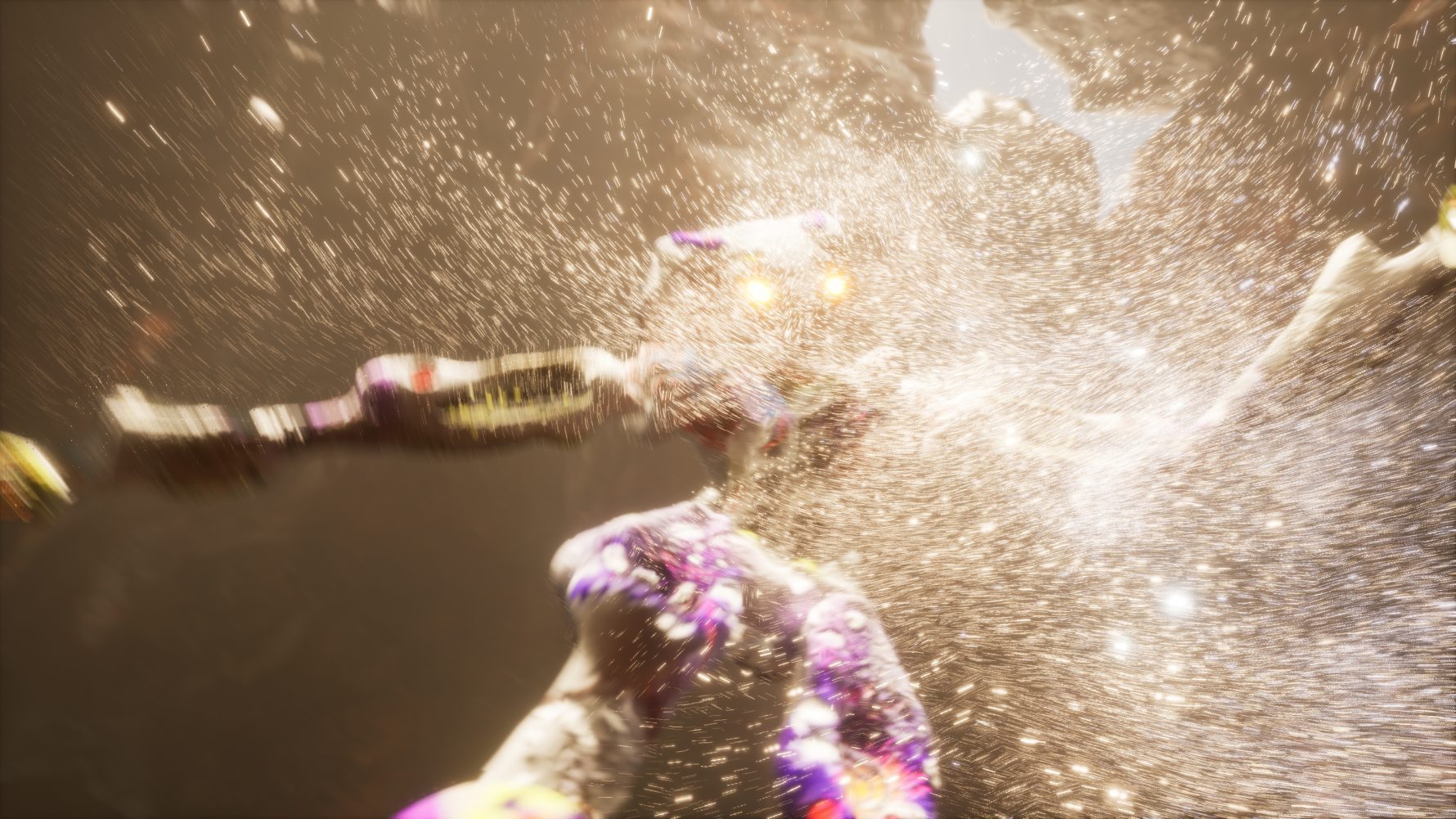
In Third World, you play as one of three protagonists tasked with exploring and extracting resources from three disparate but connected worlds. The gamebegins with instructions from the shady employer, a corporation called Headquarters, to embark on a journey to collect energy in the form of objects like the Bag of Infinite Seeds and the Air Artifice. You’re told that you will be engaging in Digital World Exploitation, but that “taking elements out will disturb the balance of the world.” Your position between colonial looter and moral explorer is constantly emphasized. You meet native NPCs who tell you that you have much to learn from them, and that the elements you assemble must be returned at the end of each level. But you must also kill local characters to extract and use their energy for your own survival. Colonial tools like maps are done away with; instead, you learn where to go through a combination of directions from Headquarters and knowledge offered by friendly NPCs. Notably, the extractive specter of the catastrophic Bolsonaro regime loomed over Brazil as Massan and their collaborators worked on the game over the last two years.
The NFT aspect feels bolted on, literally a token gesture.
Third World is an exercise in collaborative storytelling, with Massan working closely alongside several partners on design, narrative, aesthetics, gameplay, and music.The minutely detailed layers of these contributions are reflected in the deep substance of the game. A beautiful glow permeates the settings, and the characters radiate spritely energy and sparkling color. Our oversized, androgynous, alluring avatars light the way ahead. At certain junctures, the controls become redundant as short videos play, featuring agitated camera angles, superb electronic music, and a concerted focus on the protagonists, who suddenly become digital sculptures moving for our attention. These same moments are looped on larger screens throughout the Serpentine exhibition. Massan has been developing the technicolor aesthetic, digital sheen, soft hyperreal glow, abstract shapes, and cute robot-like characters for some time, with the Serpentine commission allowing the artist to take the designs to new heights.
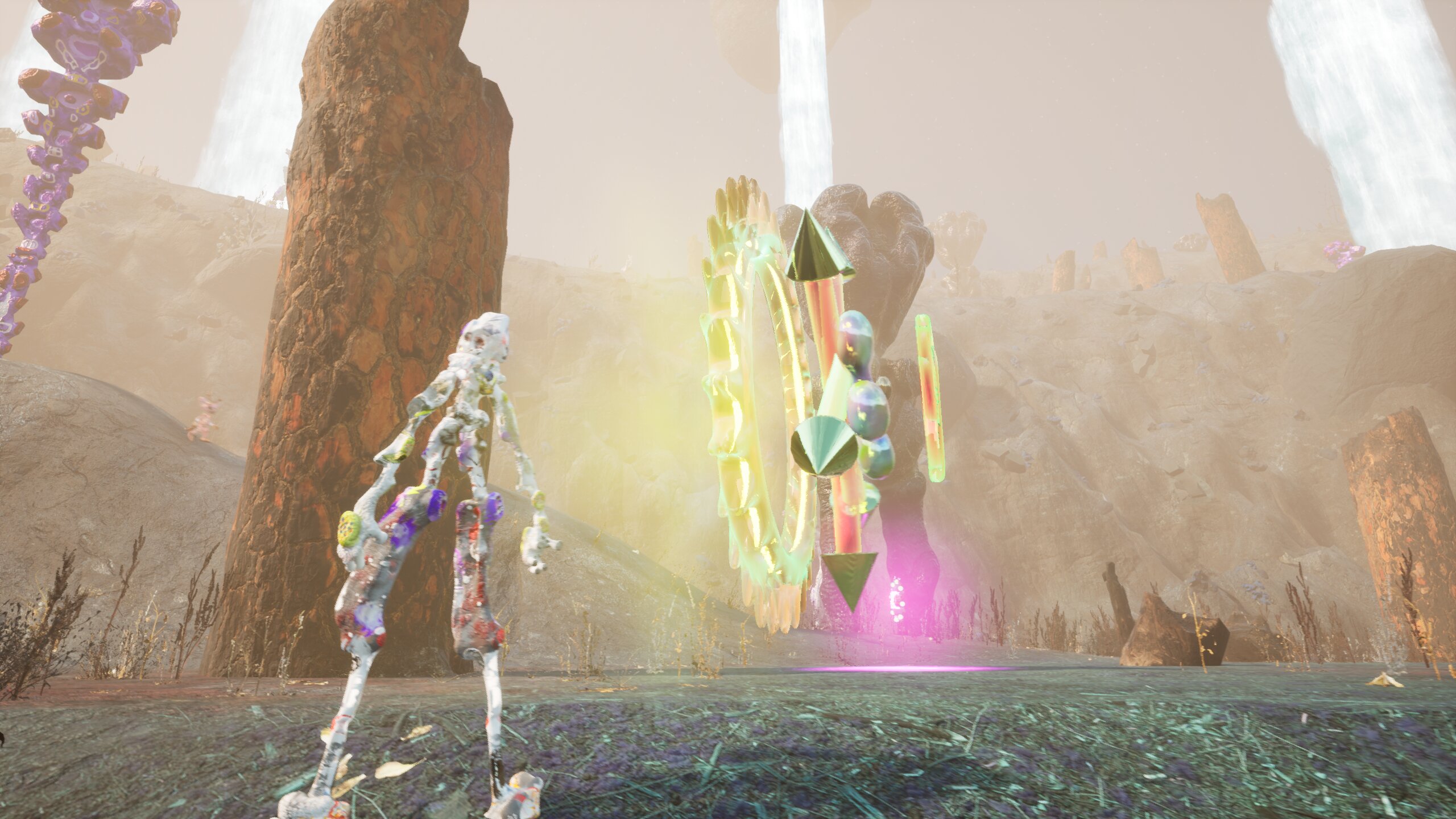
Launched in 2021 as an offshoot of Arts Technologies, the Serpentine’s Artist Worlds program has supported artists’ use of games as a medium to bring fresh audiences into livestreamed experiences. Once again, the Serpentine is helping a young artist who works with contemporary technologies reach the next stage of their career. Massan is a smart choice, since they represent a new breed of artist whose work suits social media advertising as much as the gallery (tough luck, painters), who welcomes corporate linkups as a source of funding that allows them to develop their practice. Massan is a prolific partner not only of big brands like Nike and Dazed, but also of smaller galleries and magazines. A key sponsor of the Serpentine for Third World is Tezos. Like many big crypto players, Tezos has made noticeable soft power moves across numerous fields, becoming a significant presence on billboards and t-shirts. But unlike OKX or Binance, Tezos has also made a concerted push into contemporary art. In addition to the Serpentine, Tezos has sponsored Art Basel Miami Beach in 2021 and 2022, NFT Art Day Zurich in 2022 and 2023, VerticalCrypto Art’s Proof of People festival in London in 2022, and other events.
Since museums are unlikely to display a project with a financial aspect, NFTs as digital postcards for exhibitions could remain the dominant manifestation.
In addition to funding, Tezos assisted by powering the game’s mintable NFT element. Players can use the capture mode to record gameplay as a still or video of up to 15 seconds, then collect this footage as an NFT. During the game’s virtual launch livestream and playthrough hosted by exhibition curator Tamar Clarke-Brown, Massan spoke about this being an opportunity to accumulate various perspectives by highlighting other people’s memories of the single-player game. These are valid aspirations. Done properly, they would have tied neatly into the overall artwork. But the NFT aspect feels bolted on, literally a token gesture. Despite coming from a place of sharing and care, these NFTs end up feeling like personalized digital postcards. You are even instructed to go to the Serpentine’s gift shop to claim them. It is technically possible to mint later outside the gallery, although this is not clearly presented as an option and there are no links to direct you on the Serpentine website. The site does have some clear instructions and details explaining NFTs, Tezos, and the Kukai wallet, but this information is not present where it is most needed: in the exhibition. As of publication about 150 tokens have been minted and are available to view on Tezos marketplace Objkt. The take-up is surely not helped by the clunky minting procedure. While Third World feels like a step forward in terms of introducing gaming to art audiences and vice versa, the NFT aspect may do more harm than good by confusing potentially interested participants and framing the fate of NFTs as digital add-ons to some main event.
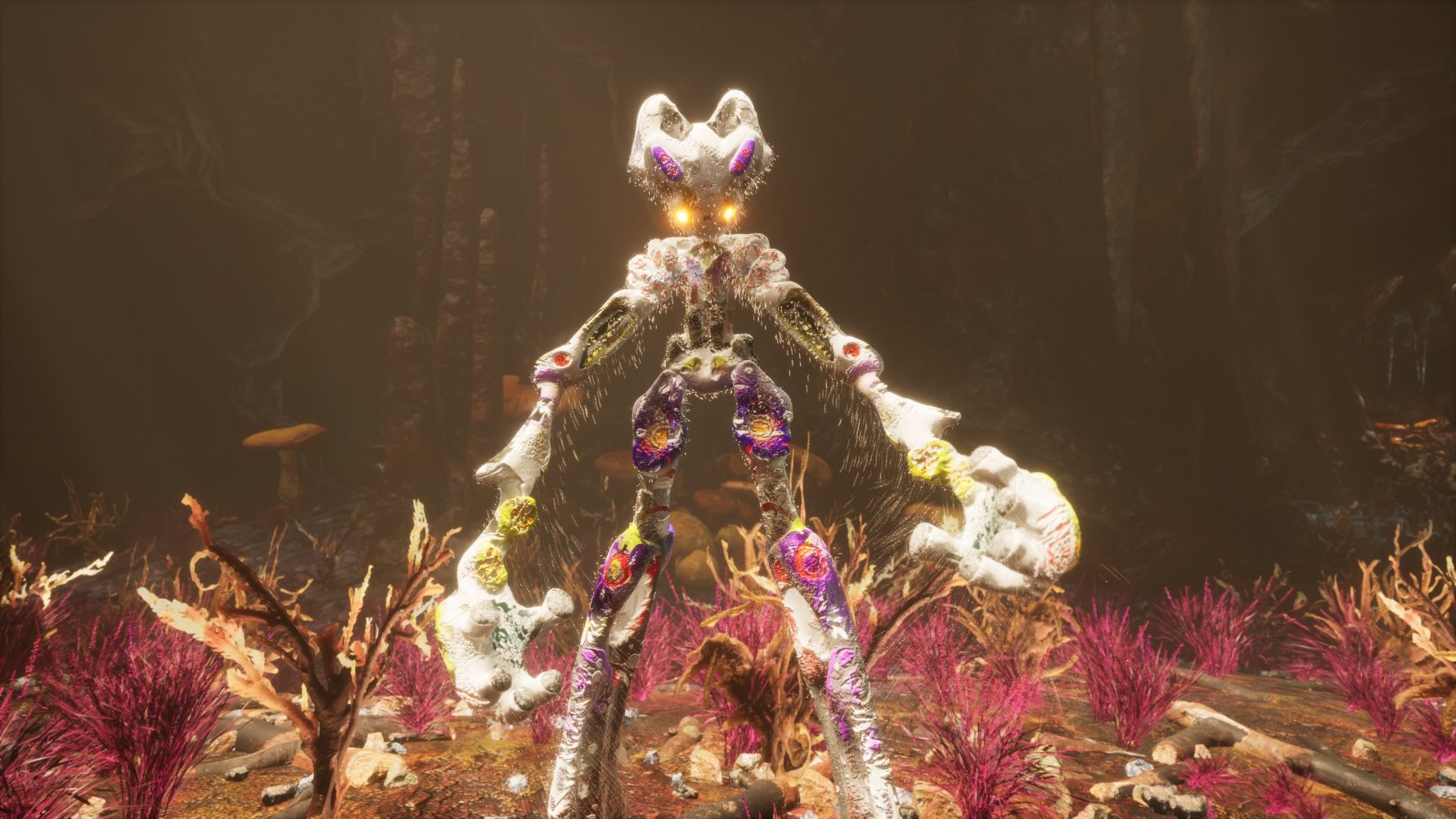
The blockchain has the power to fold in new relations of transaction and exchange. With the large group of collaborators working on Third World, a system could have been set up whereby their varied contributions were immutably recorded and subsequent activations of the game, whether financial or otherwise, could have been properly attributed and fairly funneled to all participants. There is a looming question here: do the blockchain and NFTs have an intuitive use case outside of commerce? Since museums are unlikely to display a project with a financial aspect, NFTs as digital postcards for exhibitions could remain the dominant manifestation. But blockchain does open up the possibility for institutions to think about their exhibitions in new ways. Perhaps there needs to be an update to the concept of an exhibition as a one-off occurrence, decided on by an internal team, showcasing a single artist, and reliant on corporate sponsors. A move toward long-lasting exhibitions involving audience participation and collaboration could yield more apt uses of blockchains. The authors of “Rethinking Art Ownership: Partial Common Ownership as a Step Towards a More Symbiotic Ecosystem,” supported by the Serpentine’s Future Art Ecosystems program, suggest radically reinventing monolithic ownership structures within art, “making it possible to positively entangle the interests of multiple parties in context-specific and unprecedented ways.” Although these ideas are still in the early stages, it’s a shame that Third World was not seen as an opportunity to put them into practice.
As galleries and auction houses happily present the possibilities of buying and selling digital art via NFTs, to the extent that many believe this hyper-financialization is all that the technology offers, Third World and the Serpentine missed a chance to demonstrate more rich and impactful paths of possibility for NFTs and the blockchain. For Tezos, if a key goal was to onboard new users, then this seems mostly unsuccessful. Nonetheless, Tezos should be lauded for providing critical support for an artist to build a hugely ambitious and expansive project over a long period of time. If crypto companies sponsor anything, it should be efforts like this. But there should also be deeper meditation on what this support aims to achieve. When you die in Third World—and it happens a lot—a message appears on-screen: “Have you seen everything?” In the case of NFTs and their involvement with contemporary art, the answer is: not even close.
Tom Mouna is director of communications at Zien.
